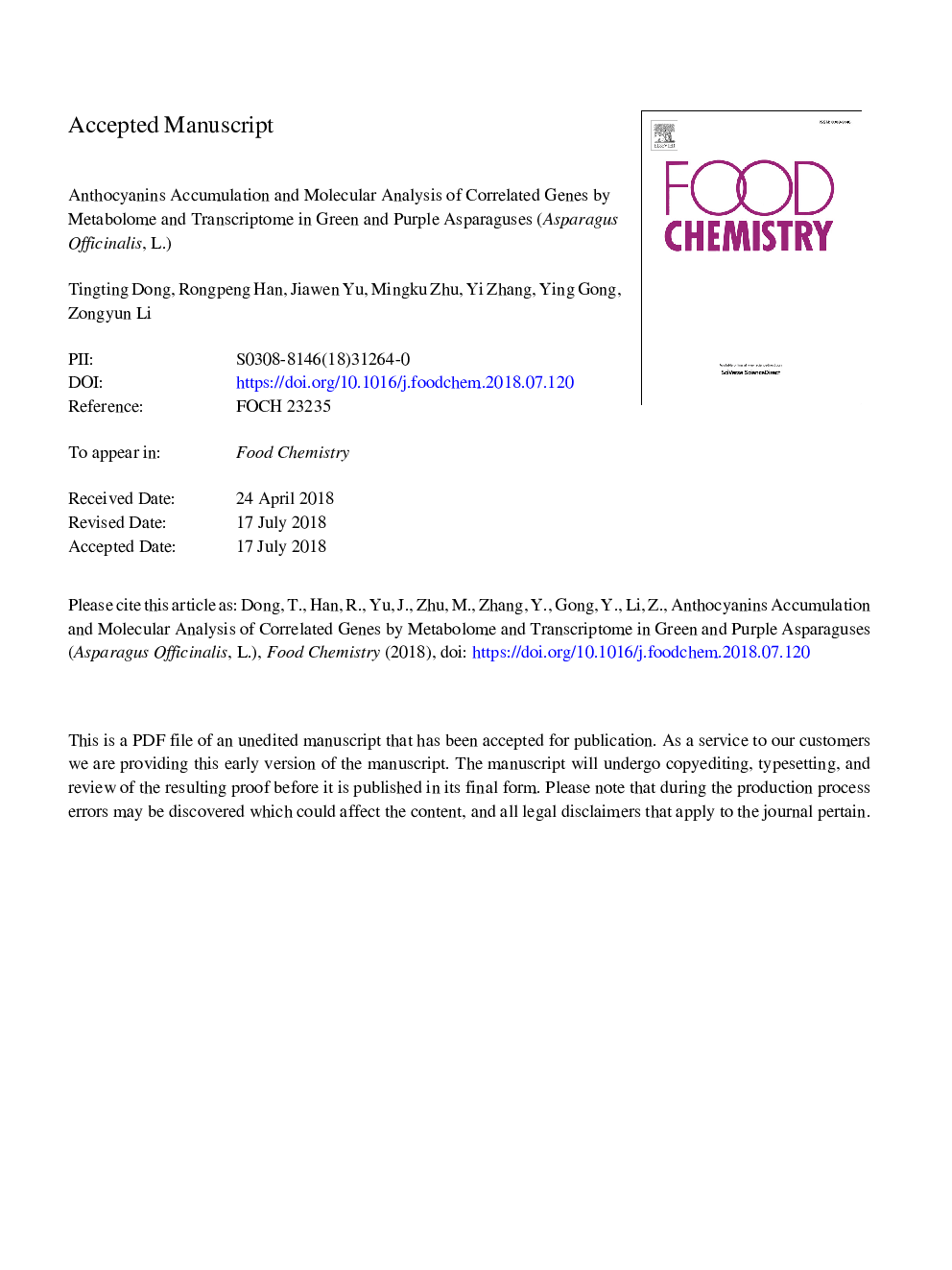| Article ID | Journal | Published Year | Pages | File Type |
|---|---|---|---|---|
| 7583752 | Food Chemistry | 2019 | 38 Pages |
Abstract
Asparagus (A. officinalis L.) is a highly nutrition vegetable crop. Here, three purple asparagus cultivars, namely, Jing Zi-2, Purple Passion and Pacific Purple, and one green cultivar, namely, Jing Lv-1 were studied. At least 16 kinds of anthocyanins were identified in purple and green cultivars, and peonidin, cyanidin and their glycoside derivatives were found to be the major anthocyanins. Transcriptome data showed that most anthocyanin biosynthetic genes and at least 5 kinds of transcription factors were significantly differentially expressed significantly between the green and purple cultivars. Dark-treated experiments revealed that anthocyanins are not produced in the absence of light, and both the anthocyanin biosynthetic and regulatory genes were down-regulated greatly in the dark, implying that anthocyanins accumulation in asparagus is light-dependent. Overall, the results of this study provide useful information for understanding anthocyanin accumulation and the molecular mechanism of anthocyanin biosynthesis in asparagus.
Keywords
4CLMRMDFRF3HqRT-PCRUFGTDHKCyanidin (PubChem CID: 128861)PALC4HPelargonidin (PubChem CID: 440832)CHSCyanidin 3-O-rutinoside (PubChem CID: 441674)CHIflavonoid 3′,5′-hydroxylaseF3′5′HF3′Hflavonoid 3′-hydroxylaseAnthocyaninFlavonoid biosynthesisTranscriptomedihydroflavonol reductaseDihydrokaempferolANSanthocyanidin synthasechalcone synthasecinnamate 4-hydroxylasephenylalanine ammonia-lyaseAsparagusmultiple reaction monitoringquantitative real-time PCRDifferentially expressed geneshigh-performance liquid chromatographyHPLCchalcone isomerase
Related Topics
Physical Sciences and Engineering
Chemistry
Analytical Chemistry
Authors
Tingting Dong, Rongpeng Han, Jiawen Yu, Mingku Zhu, Yi Zhang, Ying Gong, Zongyun Li,
